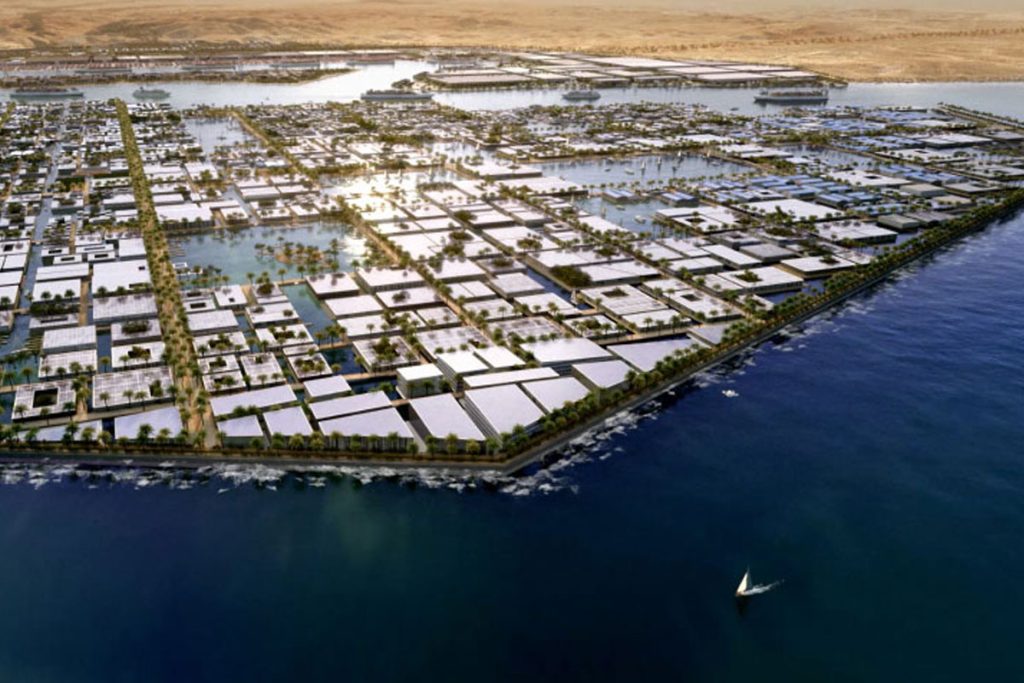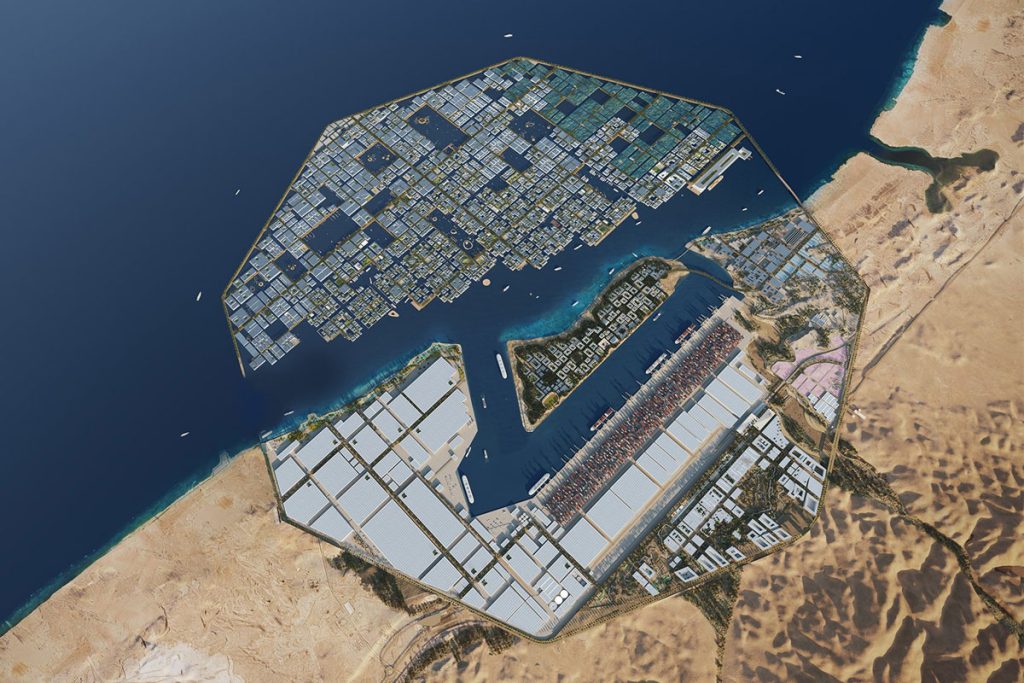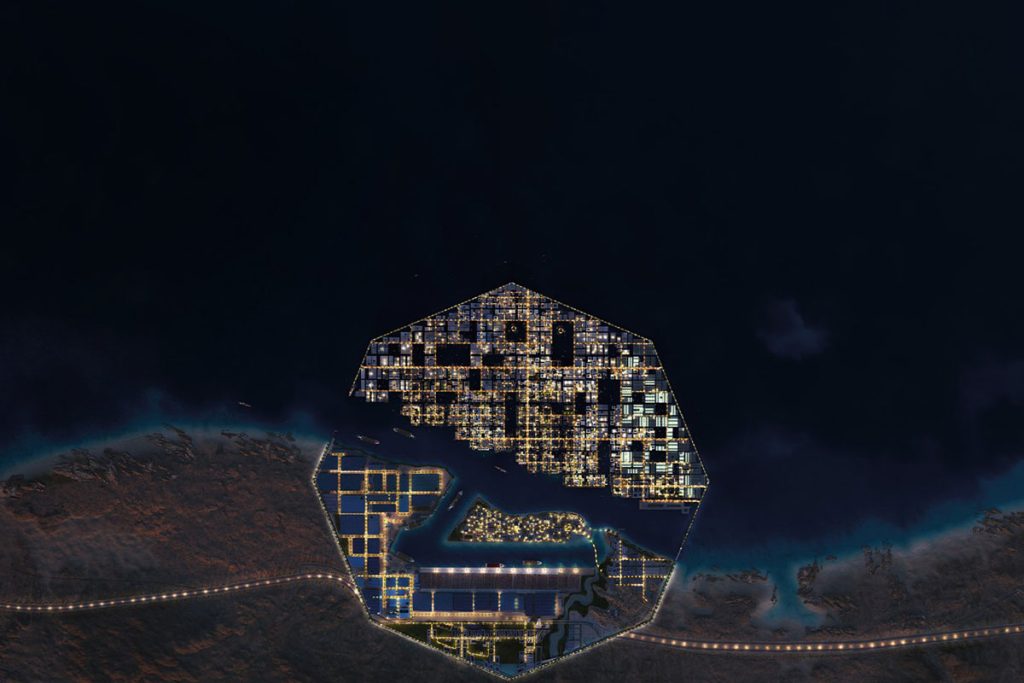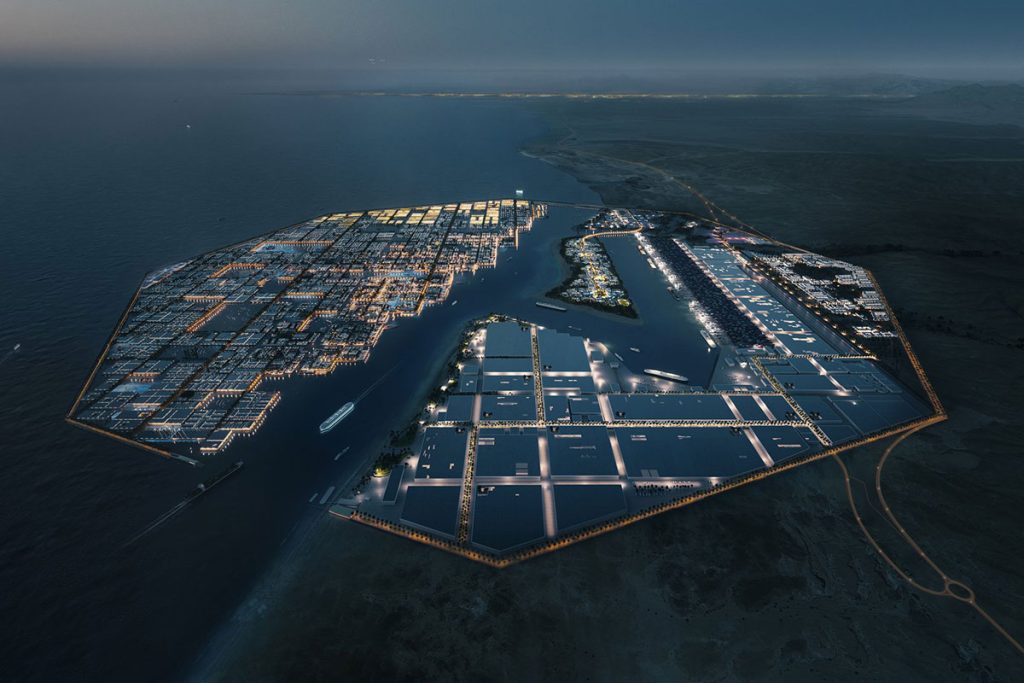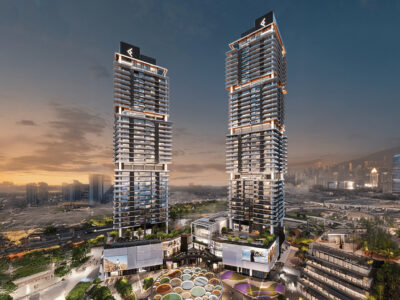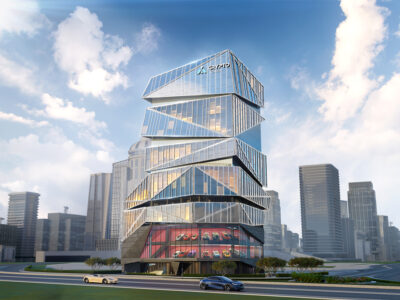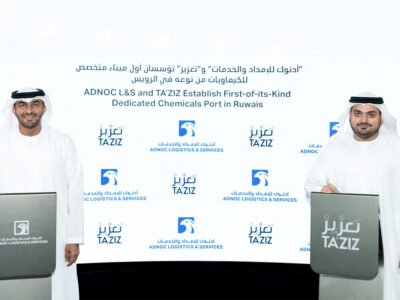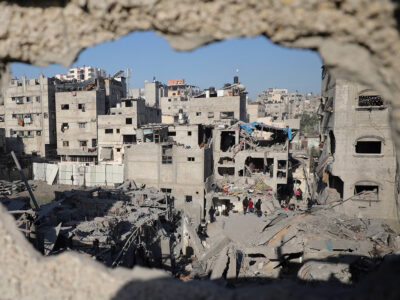Saudi Arabia’s NEOM has released what visitors can expect, according to the latest facts shared by the city’s chief executive officer Nadhmi Al-Nasr.
According to Al-Nasr, NEOM is currently developing 15 islands as phase 1, followed by a full mobility system, the “largest marina on Earth”, and is also focused on renewable energy.
NEOM, which is 5,000-year-old region, connects three continents – Asia, Africa and Europe – will see 95 percent of the whole land transformed to be a nature reserve.
The three mega-projects NEOM is focused on is The Line, Oxagon and Trojena would reportedly generate an estimated 380,000 jobs and add SAR180 billion to the overall GDP of the kingdom.
The Line
Saudi Arabia will also not directly build the futuristic city The Line at NEOM, but instead use “a lot of artificial intelligence to design through a digital twin backbone,” NEOM’s executive director Giles Pendleton said in an internal interview.
“We’ve got to build quite a lot of real estate in a short space of time. Well, we’re not actually building THE LINE. We’re assembling it from a series of modular pieces that are pre-engineered and predetermined as to what they do,” Pendleton said when asked about building a new city of nine million inhabitants in a short period of time.
The linear city, which is being built in the kingdom’s north-west Tabuk province, recently saw excavators digging a wide trench in the desert.
The Line’s mirror facade will allow the city to seamlessly blend into the nature around it. With a reduced infrastructure footprint, the linear city will have no roads, cars or emissions, running on 100 percent renewable energy with 95 percent of land preserved for nature. The city is built to prioritise health and well-being over transportation and infrastructure.
The city will be just 200 metres wide but 170 kilometres long and 500 meters above sea level with ideal climate throughout the year and a high-speed rail offering residents end-to-end transit in 20 minutes.
Pendleton also revealed that The Line will have a “one door-lock system.”
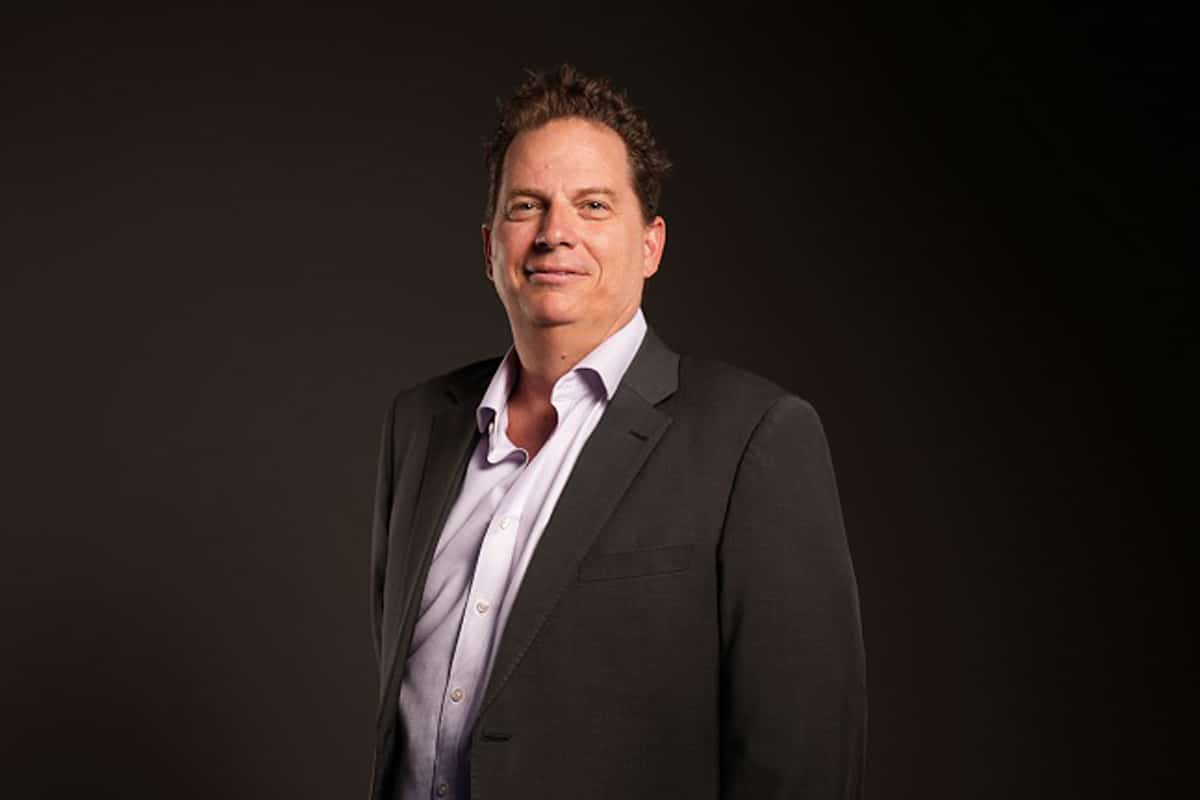
“But, if we need 100 million of them, then it’s easier for us to set up a factory and create exactly the same block 100 million times. We will create a very simple process with optimised, standardised and industrialised production whereby things are made in factories in large-scale volumes within NEOM – so that we don’t have to transport them far. Think of it like a giant assembly kit. The great thing about pre-engineered parts is that you can control quality and you can control dimensions, so that things connect.”
The project is part of the $500 billion NEOM project, a futuristic city with a mixed-use development, containing spaces for work, play and living.
Saudi Crown Prince Mohammed bin Salman said “The Line” will embody “Zero Gravity Urbanism,” where city functions are layered vertically.
“The designs revealed today for the city’s vertically layered communities will challenge the traditional flat, horizontal cities and create a model for nature preservation and enhanced human livability,” he said in a statement.
The crown prince said The Line “will tackle the challenges facing humanity in urban life today and will shine a light on alternative ways to live,” adding that residents will be able to reach all daily needs within a five-minute walk in “The Line,” where public parks and pedestrian areas, schools, homes and places for work are “layered.”
There will also reportedly be a high-speed rail with an end-to-end transit of 20 minutes.


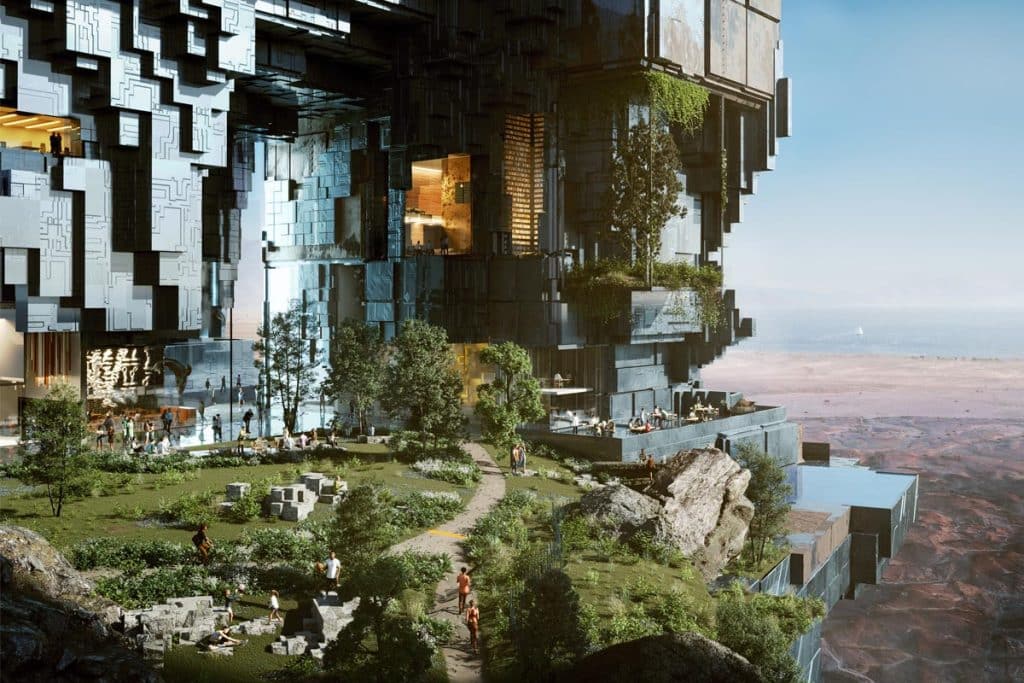




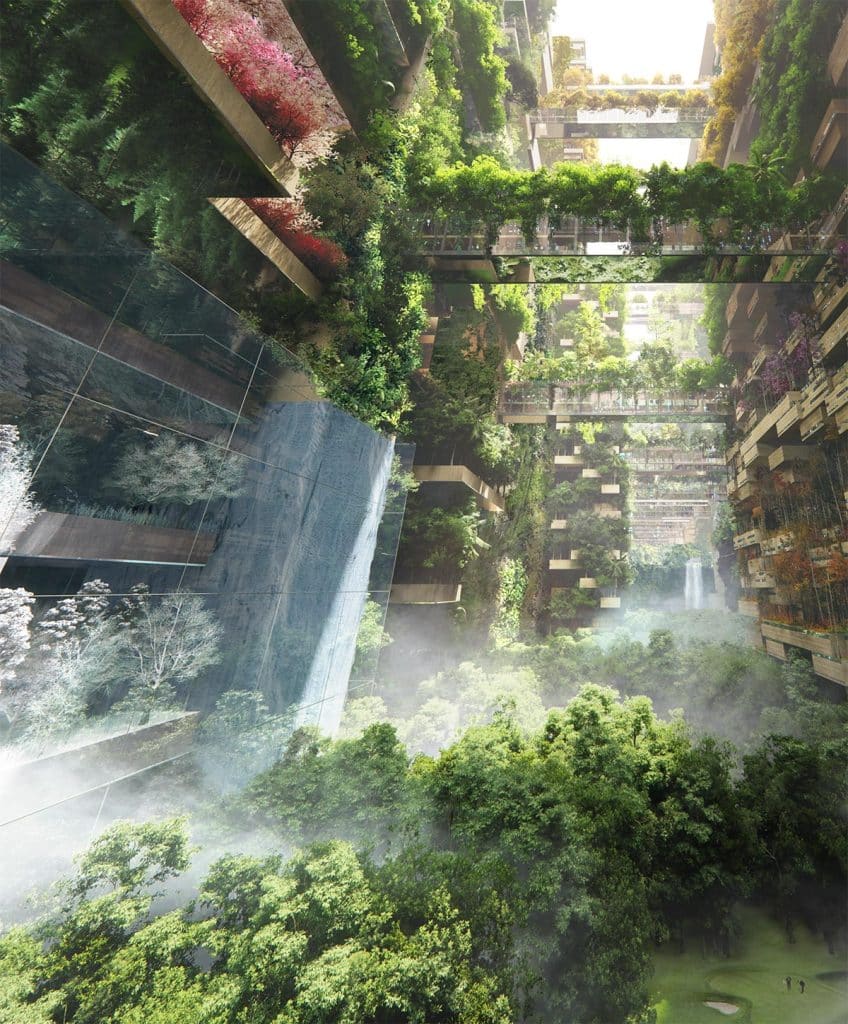
TROJENA
Located 50 kilometres from the Gulf of Aqaba coast, lies Saudi Arabia’s TROJENA – a snow-capped tourist destination, and part of the kingdom’s megaproject NEOM.
With elevations ranging from 1,500 metres to 2,600 metres, covering an area of nearly 60 square kilometres, the destination is set to be transformed ahead of the 2029 Asian Winter Games. Saudi Arabia is the first country in the Middle East to host the games, which will feature 32 participating nations.
“This achievement sheds light on the enormous potential and the outstanding infrastructure of Saudi Arabia to host and organise international-level sports competitions and games successfully,” the country’s president of the Saudi Olympic and Paralympic Committee, Prince Abdulaziz bin Turki Al-Faisal said after the announcement that TROJENA would host the event.
The kingdom’s bid to host the games was “unanimously approved” at the general assembly meeting in Phnom Penh, Cambodia last week.
TROJENA, which is due for completion in 2026, is also located at an area where winter temperatures dip below zero. Year-round temperatures in the region average around 10 degrees cooler than other parts of Saudi Arabia.
“TROJENA will redefine mountain tourism”
The project was launched as part of NEOM’s “plan and strategy to contribute to supporting and developing the tourism sector in the region,” NEOM said in a statement.
“TROJENA will redefine mountain tourism for the world by creating a place based on the principles of ecotourism, highlighting our efforts to preserve nature and enhance the community’s quality of life, which is aligned with the goals of the kingdom’s Vision 2030,” Saudi Crown Prince, Prime Minister and Chairman of NEOM company board of directors, Mohammed bin Salman said during the project’s launch.
The Crown Prince explained that the project falls in line with the Saudi Arabia’s commitment to “be part of the global effort to protect the environment.”
He added: “TROJENA will be an important addition to tourism in the region, a unique example of how Saudi Arabia is creating destinations based on its geographical and environmental diversity. This forward-looking vision will ensure that mountain tourism will be another revenue stream to support the kingdom’s economic diversification while still preserving its natural resources for future generations.”
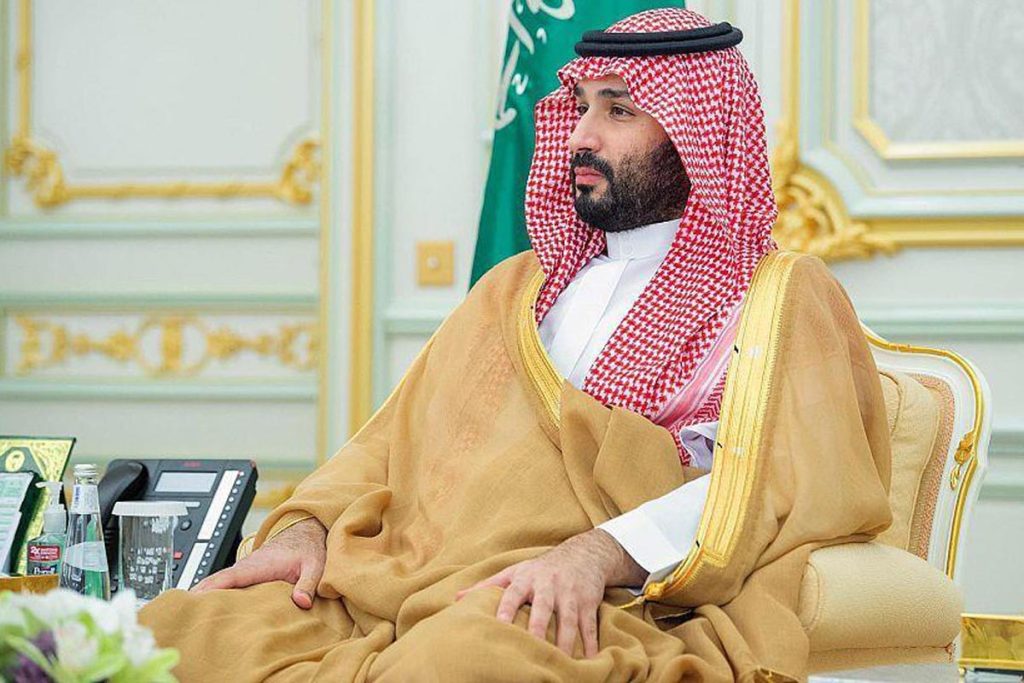
The six districts of TROJENA
The destination will house six districts, with each of them having tailored experiences to ensure visitors visit the upcoming region all year long. The districts are: Gateway, Discover, Valley, Explore, Relax and Fun.
Additionally, the destination has a planned set of programmes for visitors to experience throughout different times of the years.
From September to November, visitors can access a wellness summit, alternative medicine, discovery week, yoga retreat, artist residency and entertainment residency.
From December to March, which is the winter season, visitors can look forward to skiing, snowboarding, winter fashion week, ice skating, music festival and a film festival.
For adventure season, which runs from March to May, visitors and residents at TROJENA can opt for a high-altitude training, witness an adventure triathlon, take part in a yoga retreat, go mountain biking, paragliding and even climbing.
During Lake Season, which runs from May to September, visitors can visit a music festival, food festival, art fair, cultural week, light show, and attend a yoga retreat.
Other key highlights at TROJENA include: a ski village, the vault, the lake, the wildlife reserve, the observatory, the bow and the ultra-luxury mansions.
“Outdoor skiing is a unique feature of TROJENA that will provide a unique experience never before witnessed in the region, especially in Gulf countries known for their desert climates,” NEOM said earlier this year, adding that amateurs and professionals alike will be able to “enjoy the many ski runs of various difficulties with an array of contrasting and breath-taking views.”
The coldest place in the kingdom, will also feature ‘The Bow’ hotel, which is “an architectural masterpiece that will offer an unrivalled hotel experience.”
In terms of residences, the snowy development will also include the Slope Residences.
“These will be located near the ski slope overlooking the lake, designed to blend in with the surrounding landscape, as well as luxurious mansions with panoramic views designed to reflect the beauty of the environment,” NEOM said.
TROJENA expects to attract 700,000 visitors and 7,000 permanent residents to live in the development and its adjacent residential districts by 2030.
“All construction activity will adhere to NEOM’s strict environmental principles, which include a commitment to minimize disruption to the local ecology and to ensure long-term sustainability,” the statement said.
In line with Saudi Arabia’s Vision 2030 goals, TROJENA aims to create over 10,000 jobs and add SAR 3 billion ($800 million) to the kingdom’s GDP by 2030.


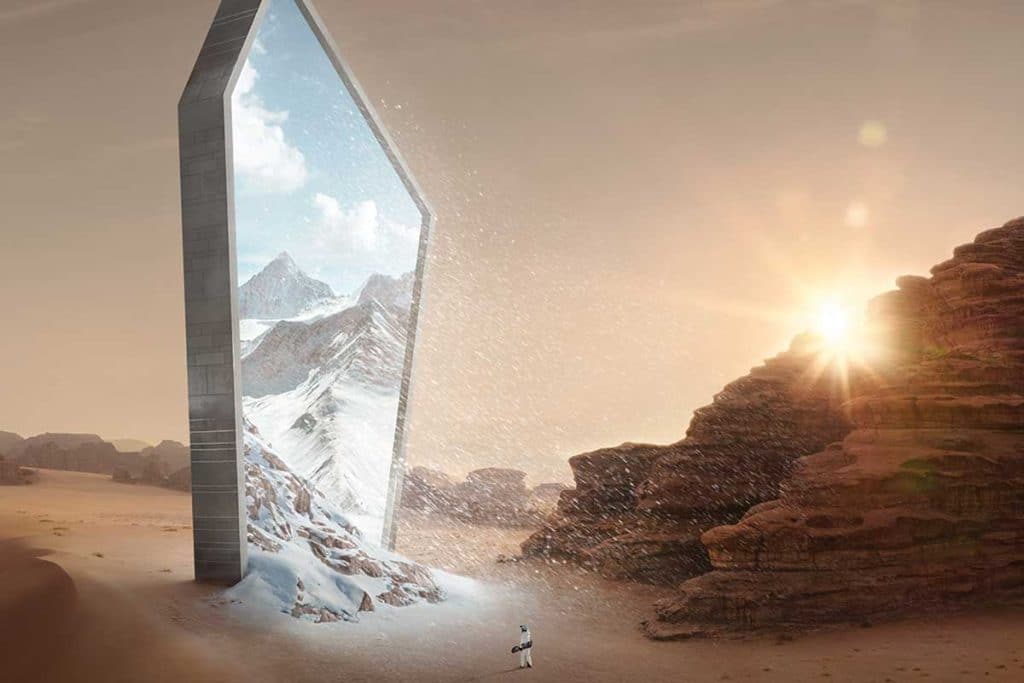
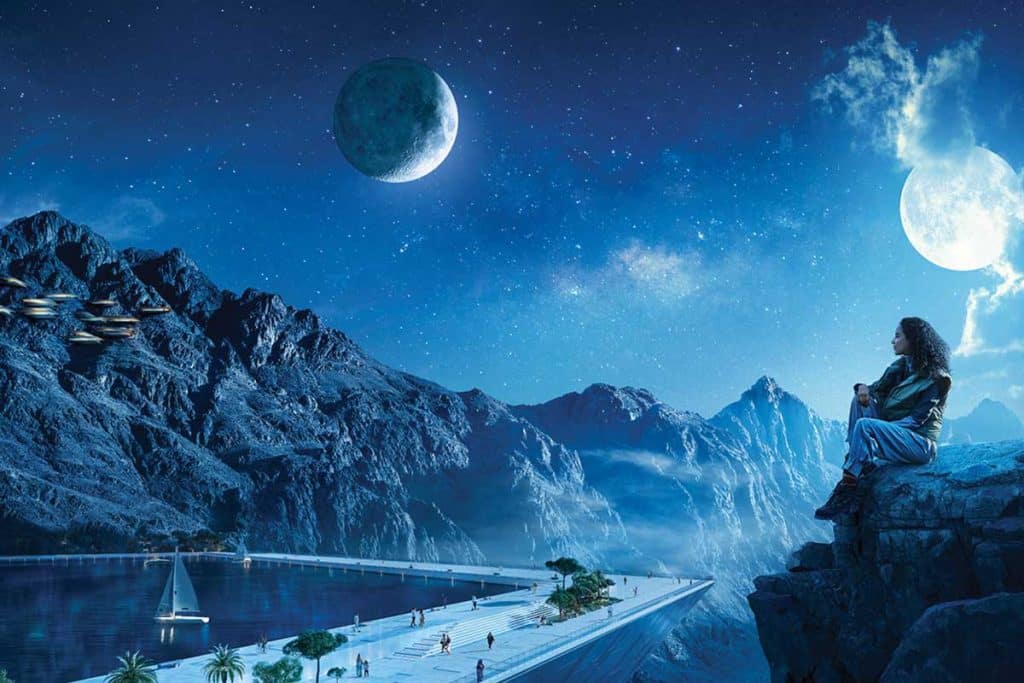

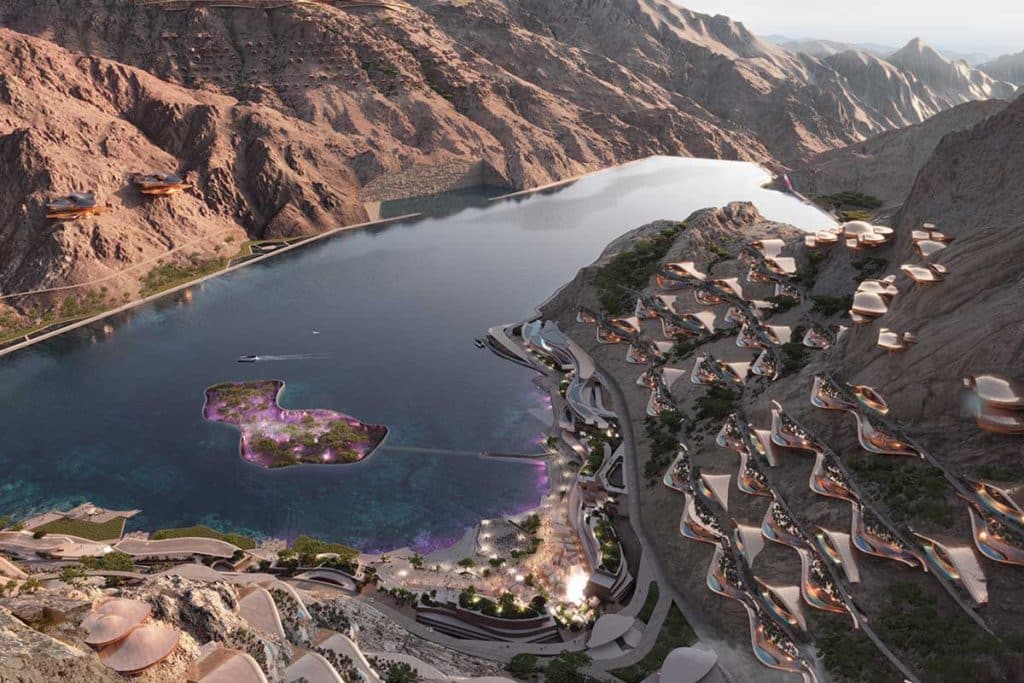
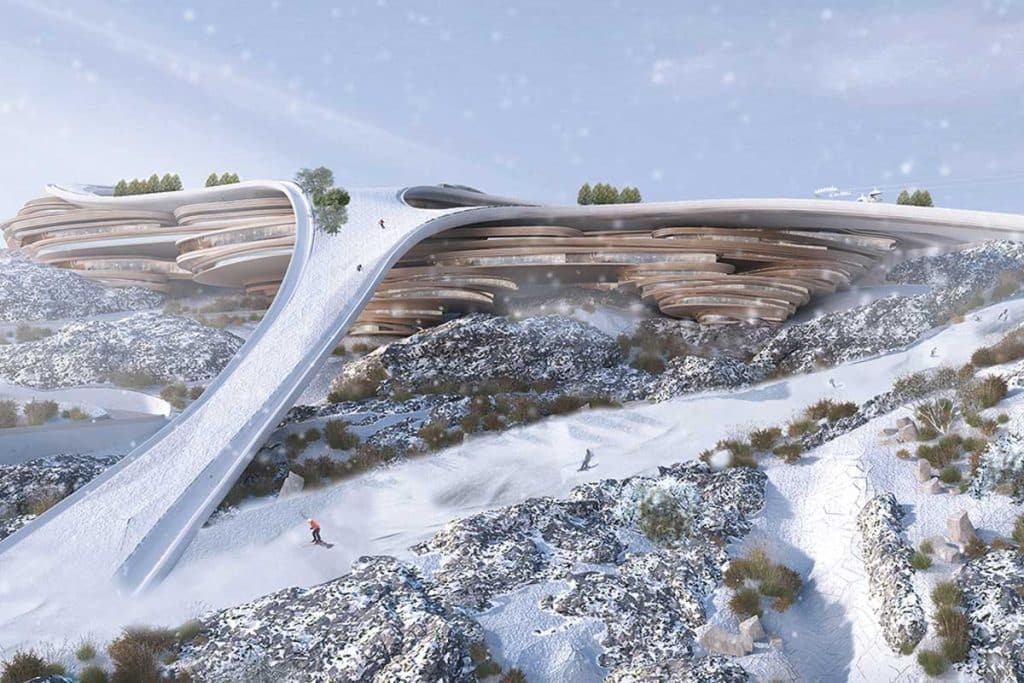
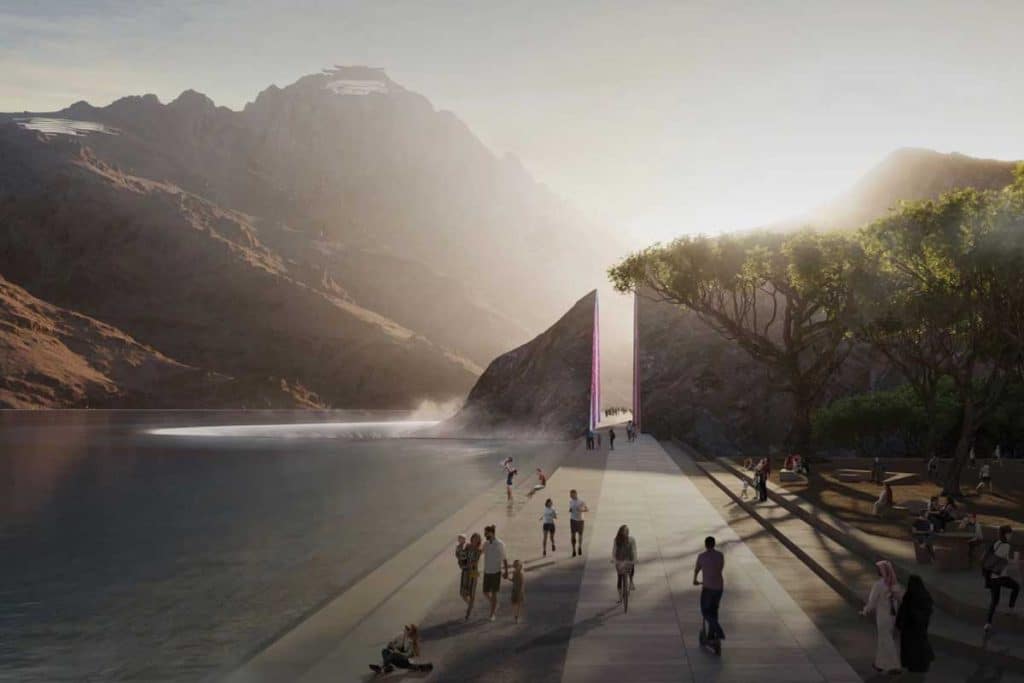
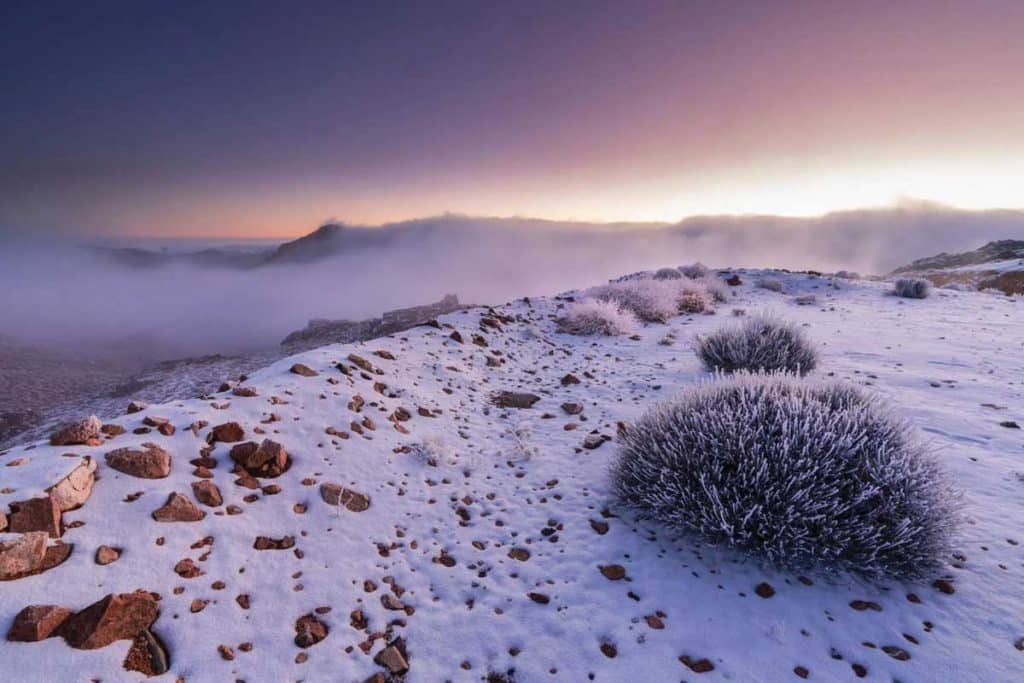
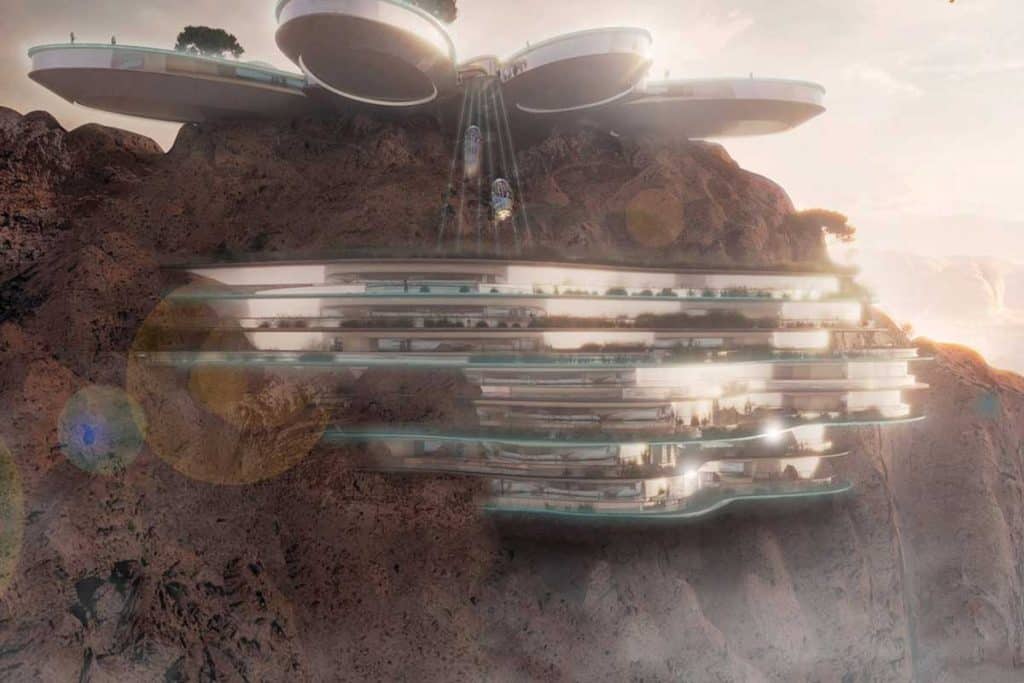
OXAGON
Although there will be residential communities, the floating city will mainly have factories, manufacturing facilities, and other logistics-related sites.
Its location, which is close to the Suez Canal where around 13 percent of global trade passes through, is believed to be an advantage for the industrial sector.
“Oxagon will be one of the world’s most technologically advanced logistics hubs with state-of-the-art integrated port and airport connectivity,” a statement in November read.
The city claims to build the world’s first fully integrated port and supply chain ecosystem – all planned around the kingdom’s net zero goals.
It will focus on seven sectors – sustainable energy; autonomous mobility; water innovation; sustainable food production; health and well-being; technology and digital manufacturing; and modern methods of construction.
Oxagon already has some confirmed tenants that demonstrate these statements – including the hydrogen project between Air Products, ACWA Power, and Neom. Gulf Modular International will also set up shop in the city, as well as Hyzon Motors and Desert Technologies.
Communities ‘integrated with nature’
As for the residential areas, Oxagon is set to build communities “integrated with nature.” They will either be walkable or people can commute via hydrogen-powered modes of transportation.
“Oxagon complements the same philosophy and principles of THE LINE and will offer exceptional livability in harmony with nature,” it said in a statement.
Most communities will be waterfront, owing to its location, and they will be “cooled and controlled using the ocean’s natural moderating effects,” Oxagon’s chief executive officer Vishal Wanchoo told Arabian Business in November last year.
The city will be resilient to sea level rise, he added, and will provide “unprecedented living qualities and immersive recreational opportunities.”
Innovation campus
Research and innovation have been key elements in Saudi Arabia’s ambitious megaprojects. The Oxagon, for instance, will have an innovation campus set to “rival established global centres.”
“Oxagon will innovate to create a truly circular economy with a collaborative environment built around research and innovation,” it said.
